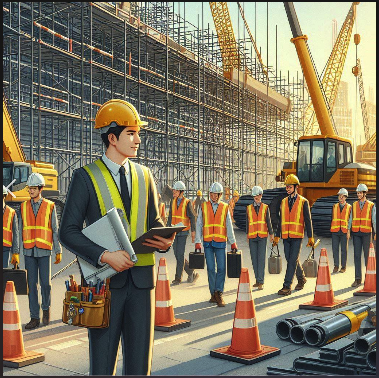The built environment is continually advancing technologically and the demands of facility management keep changing. This means that ever-busy building and facility managers have more to be accountable for. Fortunately, it also means that they have access to a wide range of technologies to help them manage their diverse roles no matter the size of the facility that they manage.
The caveat though, is how do you choose what’s best for your premises? Definitely, no facility manager would want to deploy a software solution that wastes money and adds no value to their premises – or even worse, it causes more problems and complications.
With that in mind, let’s discuss 5 of the most important solutions that facility managers should consider employing and what kind of improvements each one can bring to a facility.
1. CAFM
Computer-aided facility management (CAFM) is designed to enable a broad range of activities. Majorly, facility managers use it to manage the logistics aspects of their buildings on a digital platform. FMs use it to manage several activities that directly affect business continuity especially people, space, and resources. For example, it simplifies the administrative side of activities like move management, conference room allocation, floor space planning, desk space usage, etc.
Again, the core focus of CAFM is on the overall tracking and managing data, rather than the minutiae of building activities. It’s a powerful visual tool that combines (CAD) images with a building’s data to deliver an easy-to-use overview of all the assets in question.
Must-have CAFM features:
- Space Planning.
- Project Management.
- Manage Maintenance and Repairs.
- Real Estate Management.
- Environmental Sustainability.
- Mobile Compatibility/App.
2. CMMS software
Computerized maintenance management system (CMMS) is easily the most popular maintenance software available today, and for good reason too! A CMMS serves as a robust and user-friendly repository for an organization’s entire maintenance operations. It is used to streamline and automate every aspect of maintenance processes and procedures in modern facilities of all types and sizes.
By utilizing a CMMS, facility managers can keep their assets running at peak efficiency, manage all maintenance-related information, plan and schedule tasks, save costs, and manage their workflow better.
Must-have CMMS features:
- Work Order Management
- Report Generating
- Document Management
- Asset Tracking
- Mobile CMMS
- Inventory Management
- Preventive Maintenance Management.
3. Integrated Workplace Management System (IWMS)
An integrated workplace management system (IWMS) is a highly-versatile and multifunctional software that helps facility managers optimize the use of various workplace resources, such as their organization’s real estate portfolio, infrastructure, and assets. It is designed to help its users track their operations and it offers seamless synergy across different departments.
IWMS can be deployed as a fully packaged integrated suite or in individual modules that are easily scalable with time depending on the user’s needs. Facility managers can use it for everyday tasks like receiving and handling maintenance requests to major tasks like handling and tracking key assets and capital projects, managing occupancy matters, leases, and vendors.
Must-have IWMS features:
- Real Estate Management
- Asset Management
- Maintenance Management
- Capital Projects Management
- Financial Management
4. Visitor Management System (VMS)
Ensuring the security and privacy of occupants in a facility is important. A visitor management system (VMS) is a tool that helps facility and building managers enforce their visitor management policies with minimal human intervention. It’s essentially an upgrade from the old pen and paper sign-in process to a digitized system.
VMS is extremely useful in hotels, schools, tourist attractions, and in busy public buildings. A VMS allows you to track visitors entering the building, know their whereabouts at any time, and restrict access when required.
Must-have VMS features:
- Fully Automated Check-In Process.
- Mobile-Enabled.
- Generate Reports.
- Remote Monitoring.
5. Building Management System (BMS)
Building management systems (BMS) are computerized control systems that are becoming increasingly popular because of their ability to monitor the energy usage of electrical and mechanical installations. A BMS can manage a wide variety of installations like lighting, HVAC, electrical equipment, security, fire fighting, and elevators.
Every facility manager can relate to some of the challenges of energy management, especially in very large commercial facilities. According to the U.S. Department of Energy, installing a BMS can reduce a building’s energy bill by up to 29%.
Must-have BMS features:
- Automated Controls.
- Temperature Control.
- Security
- Fire Fighting.
Free Demo
The above list gives you an an idea about the most useful software that you could adopt for your facility. Each one has its special functionalities. But, if you are just starting out with facility management or setting up a new location, it may all seem a bit overwhelming.
It’s advisable to start with a CMMS at least then use other software with time. We can help you with that. Would you like to see our CMMS software in action? No problem. Contact us and get started with a free demo right away!
Free DemoFree Demo






